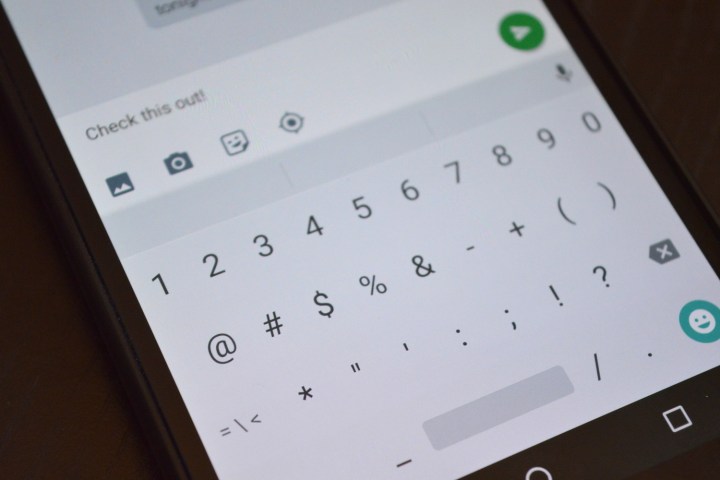
Google Keyboard 5.0 brings a slew of new features to your fingertips, including the ability to adjust the size of the keyboard, which is perfect for not only typing with one hand, but also for ensuring you can still see what you’re responding to while your typing.
The first thing you’ll notice when you get the new version of Google Keyboard is that it will ask you to submit anonymized snippets of text to help improve future versions of keyboard — you’re free to opt in or out as you so choose.
After this, you’ll finally be able to switch into one-handed mode, a very welcome addition for those with larger devices. You can access one-handed mode through the preferences menu, but you can also toggle it on and off by long-pressing the comma key. Once activated, the keyboard will shrink a little toward one side of the display, allowing you to access the far side of the keyboard with your thumb. The extra space on the other side will simply turn into an extra menu allowing you to switch between left- and right-handed typing, or exit one handed mode.

You can also go beyond one-handed mode and change the height of the keyboard. This is great for situations in which the keyboard covers up too much or too little of the display — now just make it smaller or larger to suit your needs.
Next up is the addition of a new emoji bar, which sits above the numbers and symbols keyboard. It seems as though the six emoji that sit in the bar can’t be changed, but fortunately they’re commonly used ones.
A few new gestures have also been added to the keyboard — like one allowing you to hold down on the delete key and then swipe to the left to get rid of multiple words at a time. You can also long-press a quick suggestion to “trash” it — something that will come in handy if the keyboard keeps suggesting a word you don’t use.
The update is rolling out now through the Google Play Store, so if you don’t have it yet, you should in the very near future.
Editors' Recommendations
- The first Google Pixel 9 Pro hands-on photos are here
- The 6 biggest announcements we expect from Google I/O 2024
- This Google Pixel 8a leak just spoiled everything about the phone
- Check your Google Pixel Watch right now for two new features
- Your Google Pixel 8 is getting this cool missing feature after all